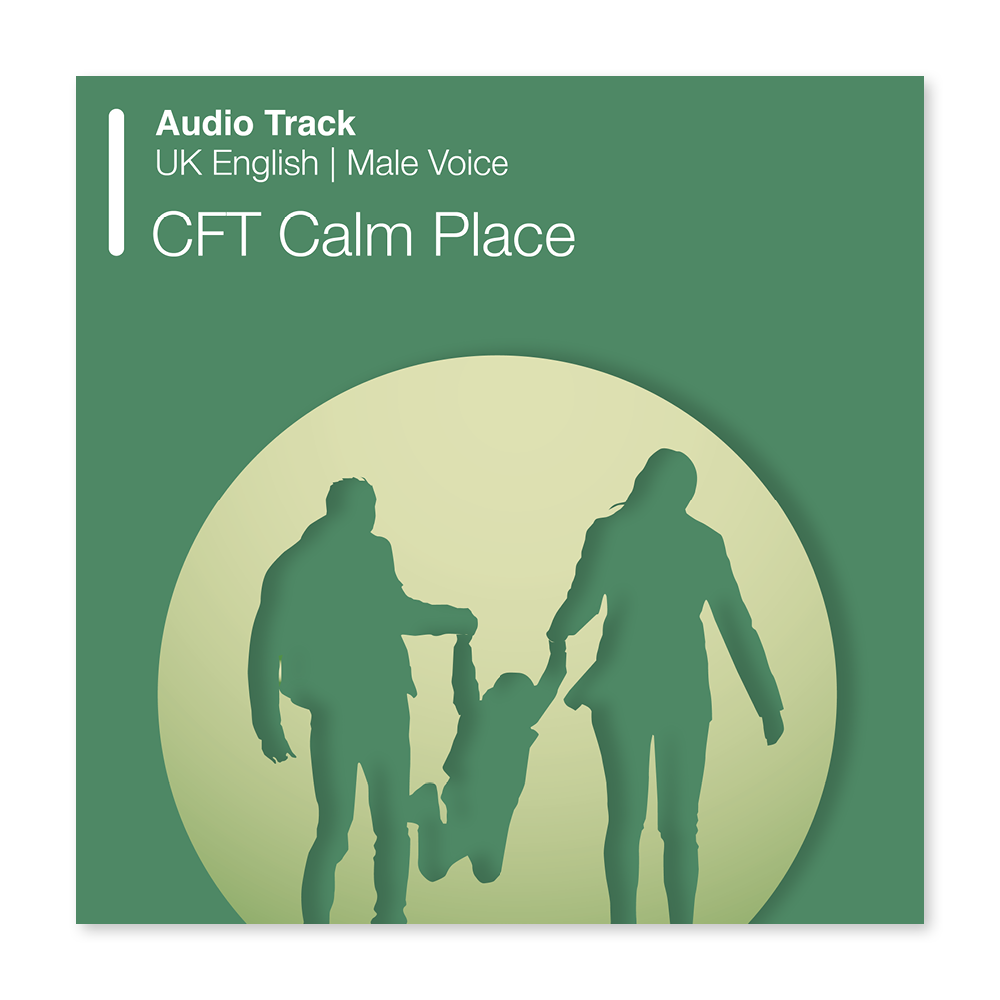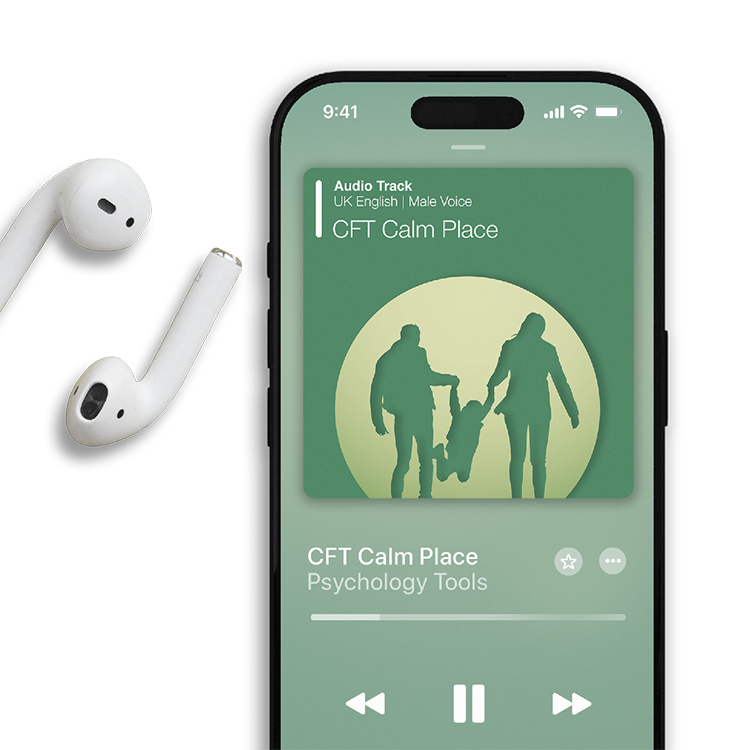Audio track (MP3)
A therapy audio track designed for skills development.
Audio script (PDF)
The script for a therapy audio track. Read along with an exercise, or record in your own voice.
This audio exercise promotes feelings of safety and calmness by leveraging the brain's response to imagined environments, guiding the listener in the experience of calm place imagery. Taken from the Psychology Tools For Developing Self-Compassion audio collection.

A therapy audio track designed for skills development.
To use this feature you must be signed in to an active account on the Advanced or Complete plans.
The script for a therapy audio track. Read along with an exercise, or record in your own voice.
To use this feature you must be signed in to an active account on the Advanced or Complete plans.

Self-compassion is a helpful skill for emotional well-being. The Psychology Tools For Developing Self-Compassion audio collection provides a structured approach to developing self-compassion using principles from compassion focused therapy (CFT). CFT is an evidence-based psychological approach that integrates evolutionary, cognitive, and affective neuroscience to help individuals cultivate compassion and alleviate high levels of shame and self-criticism.
Calm Place Imagery exploits the brain's difficulty in differentiating between real and imagined stimuli, making it possible to trigger the body's soothing system through mental visualization. Often referred to as safe place imagery, this technique is integrated in Compassion-Focused Therapy (CFT) and involves creating a mental image of a tranquil environment, facilitating relaxation and self-compassion.
Just enter your name and email address, and we'll send you CFT Calm Place (English GB) straight to your inbox. You'll also receive occasional product update emails wth evidence-based tools, clinical resources, and the latest psychological research.
Working...
This site uses strictly necessary cookies to function. We do not use cookies for analytics, marketing, or tracking purposes. By clicking “OK”, you agree to the use of these essential cookies. Read our Cookie Policy